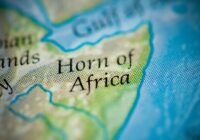China and India have never been friendly neighbors. The laws of geopolitics set the two Asian giants against one another. In recent years, Chinese President Xi Jinping’s confrontation with the US and Indian Prime Minister Narendra Modi’s ambitions for a powerful and global India have inflamed nationalism on both sides of the Himalayan border. Bilateral tensions peaked in June, when a border clash in the Himalayan Galwan Valley resulted in the death of 20 Indian soldiers and an unspecified number of Chinese troops.
Han and Hindu Nationalism Come Face to Face
Now, the competition between China and India is moving to Africa, and to East Africa in particular. Since 2000, the continent has witnessed China’s deep and ubiquitous penetration through trade, investments, infrastructures, energy, budget support and security cooperation. In 2008, New Delhi showed a newfound interest in Africa.
Despite China’s head start, India is trying to catch up to counter Beijing’s predominance over the continent. East Africa is the region where the two Asian powerhouses share vital interests and where their competition will likely play out more seriously.
India’s Africa Policy
India–Africa relations are rooted in history. The Indian Ocean constituted a channel of trade and population exchange for centuries. Consequently, East Africa has always enjoyed close ties with India, and around 3 million people of Indian descent live between the Horn and South Africa. After independence from British rule in 1947, India was politically active in Africa as a champion of decolonization and South-South cooperation. The period that followed saw India–Africa relations phase out until New Delhi brought the continent back into the picture from the mid-2000s.
In economic terms, trade augmented eightfold between 2001 and 2017, making India Africa’s third-largest trading partner with a total exchange worth $62.6 billion. While Chinese trade with the continent largely outnumbers it, India has kept up the pace and investments grew alongside trade, jumping to $54 billion in 2016.
As a fast-growing manufacturing power, India places strategic relevance to raw materials for the stability of its supply chain and energy sector. Indeed, New Delhi’s exchange with Africa, like Beijing’s, is driven by natural resources — with oil and gas accounting for approximately two-thirds of the total — followed by gold and other ores.
Political ties have also strengthened over the years. In 2008, the first India–Africa Forum Summit was launched in New Delhi and took place again in 2011 and 2015, with 41 African heads of state attending; the next conference was scheduled in September 2020. These summits allowed African leaders, on the one hand, to set out their cooperation priorities and India, on the other, to respond accordingly. As a result, India–Africa cooperation pivoted around capacity building, technology transfer and infrastructural investments. Lastly, India has sought support on UN reform, which would be unrealistic without the votes of African countries in the General Assembly.
Security issues have been on the agenda as well. New Delhi is particularly active in the realm of anti-piracy. After the kidnapping of several Indian citizens by Somali pirates, the Indian navy stepped up its efforts after 2008 and escorted over 1,000 vessels across the Gulf of Aden, sometimes in cooperation with the European Union’s Mission Atalanta.
Another domain that saw India at the forefront is UN peacekeeping missions. The Indian subcontinent has always been one of the leading suppliers of peacekeepers to UN missions, with 80% of them deployed in Africa. On top of that, Indian defense academies have provided training to the Nigerian, Ethiopian and Tanzanian military.
Modi and the Challenge to China
Modi has given further impetus to India–Africa relations. In July 2018, he outlined the 10 guiding principles of India’s engagement with Africa during a visit to Rwanda and Uganda. On that occasion, the prime minister leveraged India’s role in South-South cooperation to advance his credentials as leader of the developing world. Besides rhetoric, Modi moved from words to action by signing a defense agreement with President Paul Kagame of Rwanda and by extending two credit lines worth nearly $200 million to the Ugandan government. He also announced the opening of 18 new diplomatic missions in Africa by 2021, bringing the total to 47.
The prime minister has placed a keen eye on East Africa, which is set to become the epicenter of the India–China confrontation. The Red Sea and the Gulf of Aden are essential maritime routes for India’s export-oriented economy. China is heavily investing along these two waterways through the “Belt and Road Initiative” (BRI), especially in the port of Djibouti and the Suez Canal.
Djibouti is indeed becoming yet another element of the Chinese maritime network in the Indian Ocean, along with Pakistan, the Maldives, Sri Lanka, Bangladesh and Myanmar. This network, the so-called “String of Pearls,” geographically surrounds India and is perceived as a strategic nightmare in New Delhi. Therefore, the Chinese expansion in the western Indian Ocean urges India to intervene.
To counter the BRI in the Indian Ocean, New Delhi launched a similar initiative for East Africa: the Asia-Africa Growth Corridor (AAGC). Conceived in 2016 and still at an early stage, this Indo-Japanese project will attract investments on development, quality infrastructure, institutional connectivity, capacity building and people-to-people cooperation to the region. Due to its anti-Chinese nature, the AAGC primarily targets contested countries like Djibouti and Ethiopia.
In 2017, Indian President Ram Nath Kovind clustered both countries for his first official visit. At the time, Ethiopia was already the largest beneficiary of India’s scholarship scheme and lines of credit for Africa with $1.1 billion, besides being the scene of the 2011 India-Africa Forum Summit. Djibouti was a relatively new target for New Delhi. In the year of the visit, China opened its first overseas military base in Djibouti. Consequently, Kovind not only signed some cooperation agreements, but he also reportedly expressed India’s interest in a military base on Djiboutian soil, a project still under discussion.
The geopolitical confrontation between India and China looms on the horizon. Africa — particularly the east — is set to become an arena of such a global, momentous challenge. India has economic, energetic and security reasons to deepen its relations with the continent. Furthermore, China’s ubiquitous presence in Africa and the Indian Ocean is a direct menace to Modi’s global ambitions. Although China is still out of reach, New Delhi’s engagement has been steadily expanding in all fields, and its approach based on soft power looks promising. The concepts of building Africa’s capacities and unleashing its potential, along with the employment of African workers instead of foreign labor like China, have resonated across the continent.
On the one hand, East Africa is under India’s radar more than any other region of the continent for its strategic position. On the other, East African governments have a long track record of balancing off the influence of external actors. East Africa is also the region where India can rely on a robust diaspora community. Hence, India presents itself as a useful ally to balance China’s growing influence in the region.
Finally, yet importantly, the US and the European powers might prefer New Delhi’s penetration into the continent at the detriment of China’s, which is perceived as a growing geopolitical threat to the West. East Africa, in sum, might soon become the new battleground of the economic and security confrontation between the two Asian giants.
*[Fair Observer is a media partner of Gulf State Analytics.]
The views expressed in this article are the author’s own and do not necessarily reflect Fair Observer’s editorial policy.
Support Fair Observer
We rely on your support for our independence, diversity and quality.
For more than 10 years, Fair Observer has been free, fair and independent. No billionaire owns us, no advertisers control us. We are a reader-supported nonprofit. Unlike many other publications, we keep our content free for readers regardless of where they live or whether they can afford to pay. We have no paywalls and no ads.
In the post-truth era of fake news, echo chambers and filter bubbles, we publish a plurality of perspectives from around the world. Anyone can publish with us, but everyone goes through a rigorous editorial process. So, you get fact-checked, well-reasoned content instead of noise.
We publish 2,500+ voices from 90+ countries. We also conduct education and training programs
on subjects ranging from digital media and journalism to writing and critical thinking. This
doesn’t come cheap. Servers, editors, trainers and web developers cost
money.
Please consider supporting us on a regular basis as a recurring donor or a
sustaining member.
Will you support FO’s journalism?
We rely on your support for our independence, diversity and quality.






